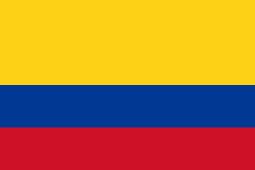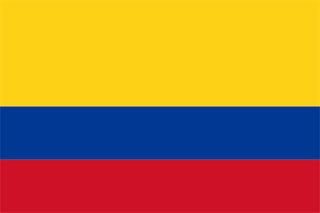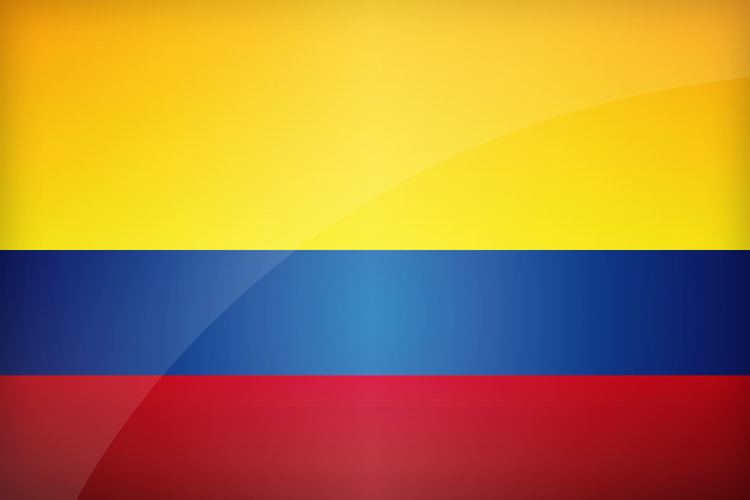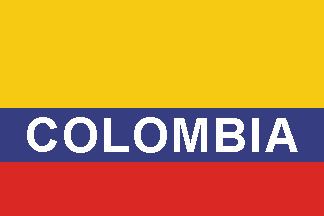Proportion 2:3 | Adopted on 26 November 1861 | |
 | ||
Name Tricolor Nacional (National tricolor) Design A horizontal tricolor of yellow (double-width), blue and red. | ||
The national flag of Colombia was adopted on November 26, 1861. It is a horizontal tricolour of yellow, blue and red. The yellow stripe takes up the top half of the flag and the blue and red take up a quarter of the space each. It is a triband flag with horizontal bands colored yellow, blue and red. Vertically the yellow occupies 50% and the other 50% is shared by the blue and red colors in equal proportion.
Contents

Flag of colombia bandera de colombia
Symbolism and design

The horizontal stripes (from top to bottom) of yellow, blue and red tricolour have a ratio of 2:1:1. It—together with that of Ecuador, also derived from the flag of Gran Colombia—is different from most other tricolour flags, either vertical or horizontal, in having stripes which are not equal in size. (Venezuela, whose flag is also derived from the same source, opted for a more conventional tricolour with equal stripes).
The official colors have not yet been established by law. However, it is recommended to use the following:
According to the current interpretation, the colors signify:

Although, the flag has other representatives such as blue for loyalty and vigilance, red for victory of battles for Colombian independence, and finally yellow for sovereignty and justice.
History
Francisco de Miranda was the person who originally created the common yellow, blue and red flag of Gran Colombia that Colombia, Ecuador and Venezuela, with slight variations, share today. Miranda gave at least two sources of inspiration for his flag. In a letter written to Count Simon Romanovich Woronzoff and philosopher Johann Wolfgang von Goethe, Miranda described a late-night conversation he had had with Goethe at a party in Weimar during the winter of 1785. Fascinated by Miranda's account of his exploits in the United States Revolutionary War and his travels throughout the Americas and Europe, Goethe told him that, "Your destiny is to create in your land a place where primary colours are not distorted.” He proceeded to clarify what he meant:
After Miranda designed his flag based on this conversation, he recalled seeing a fresco by Lazzaro Tavarone in the Palazzo Belimbau in Genoa that depicted Christopher Columbus unfurling a similar-coloured flag in Veragua during his fourth voyage.
In his military diary, Miranda gave another possible source of inspiration: the yellow, blue and red standard of the Burger Guard (Bürgerwache) of Hamburg, which he also saw during his travels in Germany.
In the 1801 plan for an army to liberate Spanish America, which he submitted unsuccessfully to the British cabinet, Miranda requested the materials for "ten flags, whose colours shall be red, yellow and blue, in three zones." However, the first flag was not raised until March 12, 1806, in Jacmel, Haiti, during his ill-fated expedition to Venezuela.
